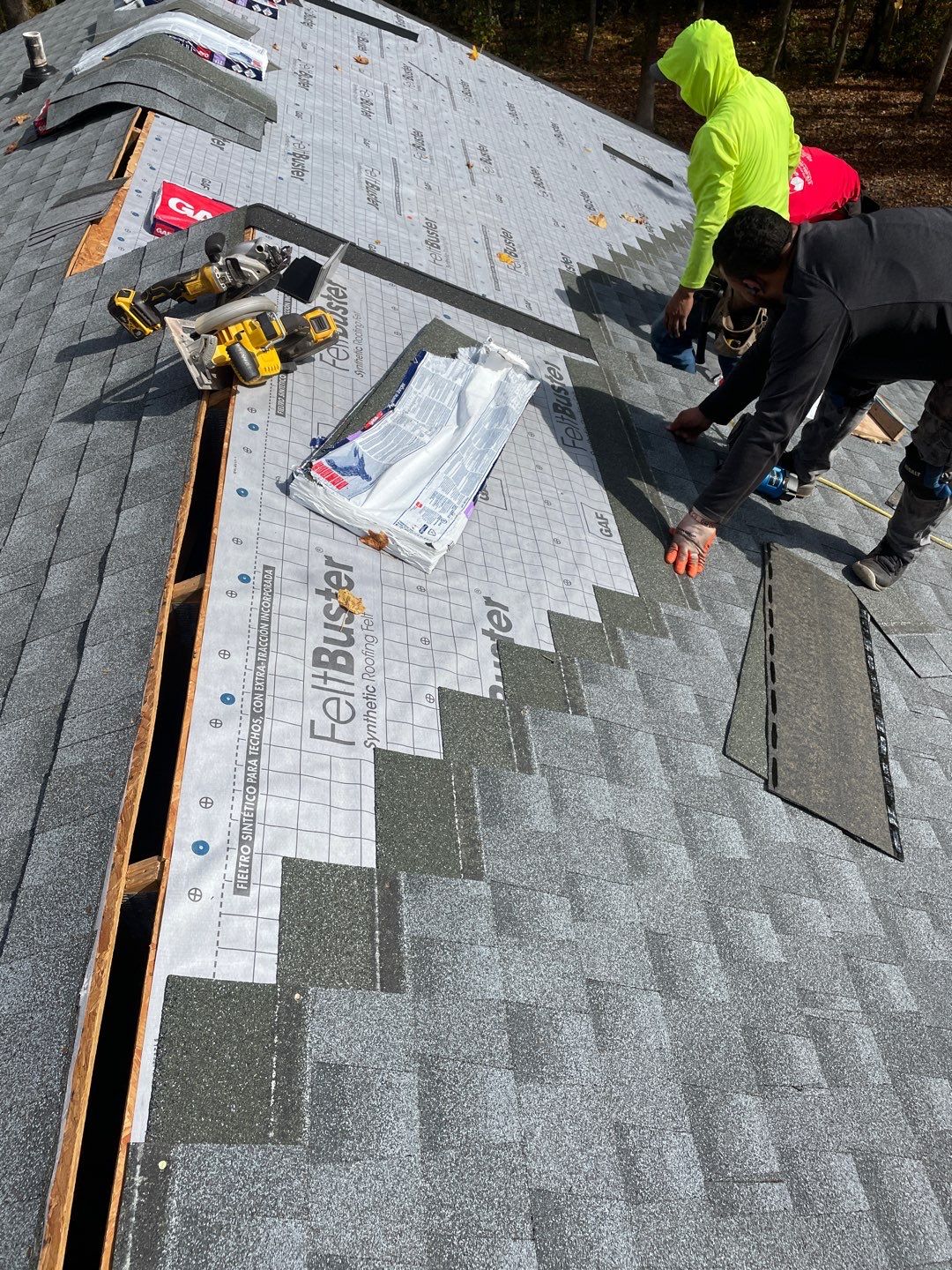Local Insights on Roofing Companies Gainesville Florida Homeowners Prefer
Local Insights on Roofing Companies Gainesville Florida Homeowners Prefer
Blog Article
Finest Practices for Ensuring Proper Roof Covering Air Flow
A balanced consumption and exhaust air vent proportion, commonly 1:300, plays an essential function, with intake vents preferably placed at the lower side of the roofing for trendy air entry and exhaust vents at the top for cozy air exit. Keeping insulation away from vents is important to avoid air movement limitation.
Understand Air Flow Basics
Properly comprehending air flow basics is vital for guaranteeing the durability and performance of roof covering systems. Effective ventilation alleviates wetness buildup and temperature extremes in the attic room, both of which can lead to substantial structural damages in time. A well-ventilated roof helps in preventing common concerns such as mold growth, timber rot, and ice dams, which can jeopardize the integrity of the roofing materials and the underlying structures.
The key goal of air flow is to promote the movement of air, permitting for a constant exchange in between the interior and outdoor environments. This balance is attained with a combination of intake and exhaust vents that interact to maintain optimum air movement. Intake vents, usually situated along the soffits or eaves, enable fresh air to go into the attic room, while exhaust vents, often situated at or near the roof covering ridge, make it possible for hot, humid air to get away.
Key factors influencing the performance of roof covering air flow include appropriate positioning, appropriate sizing, and guaranteeing that both intake and exhaust vents are unblocked. Routine evaluation and maintenance are crucial to recognize potential obstructions, damages, or inadequacies in the ventilation system, thus protecting the roof covering's efficiency and sturdiness.
Sorts Of Roofing System Vents
Roofing vents play an important function in keeping efficient attic ventilation and, by extension, the overall health of the roofing system. Various kinds of roof covering vents are readily available, each with distinct benefits customized to particular roofing demands.

Soffit vents are set up under the eaves and operate in tandem with roofing vents to guarantee a balanced intake and exhaust system. By allowing cooler air to get in from below, soffit vents help with the expulsion of warm air through upper vents. Gable vents, located on the exterior walls of the attic room, offer an additional efficient solution, particularly in homes with saddleback roofs.
Examine Your Present Air Flow

Following, take into consideration the age and problem of your roofing materials and ventilation parts. Older systems might not follow present building ordinance or might have weakened gradually, lowering their effectiveness. Conduct a comprehensive exam to identify any signs of wear and tear, such as rust, damages, or voids that can endanger the system's efficiency.
In addition, determine the attic temperature and humidity degrees. High temperature levels and moisture can indicate poor air flow - roofing companies. Use a hygrometer and thermostat to obtain exact analyses, comparing them with outside problems. Relentless disparities suggest potential concerns that require dealing with.
Installation Best Practices
Efficient installation of roof air flow systems is extremely important for making certain optimum efficiency and longevity. Correct setup starts with understanding the details ventilation needs of the structure and the roof covering it covers. This involves computing the correct proportion of consumption to wear down vents, generally sticking to the 1:300 rule, which stipulates one square foot of air flow for each 300 square feet of attic floor area.

The placement of vents is similarly vital. Consumption vents need to be installed at the roof covering's lower side, frequently in the soffits, to enable cool air to get in. Exhaust vents, on the other hand, must be mounted near or at the roof's optimal to assist in the leave of warm, wet air. This develops a natural airflow that aids keep temperature level and wetness equilibrium within the attic room.
Seal all vent click site connections thoroughly to stop air leakages and possible water seepage. Use high-grade products and comply with maker guidelines to guarantee sturdiness and efficiency. Furthermore, integrating ridge vents with baffles can substantially enhance air flow efficiency by protecting against wind-driven rainfall and snow from entering the attic.
Inevitably, exact setup of roof ventilation systems mitigates possible issues such as mold development, ice dams, and structural damage, making certain the roof covering's stability and the building's total health.
Routine Upkeep Tips
Consistency in maintenance methods is basic to making certain the long-lasting efficiency of roof covering ventilation systems. During these assessments, ensure that vents are totally free of debris, nests, and various other obstructions that might hamper air flow.
Make use of a soft brush or a vacuum to eliminate dust and particles from consumption and exhaust vents. Be cautious not to harm the vent screens or louvers throughout the process.
Correct insulation is equally important. Make sure that attic insulation does not block the vents, as this can drastically limit air movement. Rearrange or replace it to preserve an efficient obstacle. if any insulation has recommended you read actually shifted or resolved.
Last but not least, change any damaged or missing parts promptly. Broken vents, cracked tiles, or shabby blinking can all contribute to insufficient ventilation and should be attended to immediately. Normal maintenance makes certain that the roofing ventilation system functions ideally, therefore expanding the life expectancy of the roofing itself.
Verdict
Guaranteeing proper roof ventilation is extremely important for preserving the efficiency and resilience of a roof. Adherence to the 1:300 consumption and exhaust air vent ratio, combined with the critical placement of vents, is necessary. Routine biannual evaluations, particles cleansing, and making sure insulation does not block air movement are vital practices. straight from the source Applying these best practices will foster a well-ventilated roofing system, therefore minimizing possible issues connected to moisture buildup and too much warmth, ultimately extending the roofing's lifespan.
A balanced consumption and exhaust vent proportion, frequently 1:300, plays a pivotal role, with consumption vents preferably placed at the reduced side of the roof for great air entry and exhaust vents at the height for cozy air leave. Consumption vents, generally situated along the eaves or soffits, enable fresh air to enter the attic space, while exhaust vents, often located at or near the roofing ridge, allow warm, damp air to get away.
Soffit vents are installed under the eaves and work in tandem with roof vents to make certain a balanced intake and exhaust system. By enabling cooler air to go into from below, soffit vents facilitate the expulsion of hot air with upper vents. Adherence to the 1:300 intake and exhaust vent proportion, combined with the calculated placement of vents, is vital.
Report this page